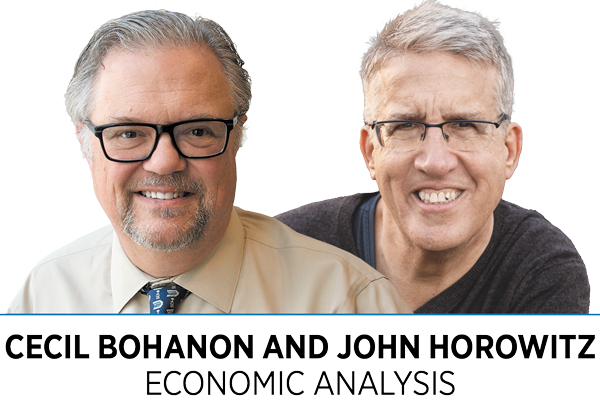Subscriber Benefit
As a subscriber you can listen to articles at work, in the car, or while you work out. Subscribe Now As we enter the new year of 2024, many economic commentators note that while the standard measures of economic well-being are positive, the public’s perception of the economy is rather grim.
As we enter the new year of 2024, many economic commentators note that while the standard measures of economic well-being are positive, the public’s perception of the economy is rather grim.
The long-heralded recession has not emerged. The unemployment rate has stayed below 4%. Inflation expectations as measured by our favorite statistics—the difference in the five-year nominal yield on the indexed and unindexed five-year U.S. treasury note—stood at 2.12%, near the benchmark 2%.
Yet, when a major polling organization asked a group of people whether their personal financial situation had become better or worse in the last six months, only 17% said better, 41% said worse, and 42% said about the same or not sure. When a follow-up asked whether they expected their personal financial situation to get better or worse in the next six months, 25% said better, 32% said worse, and 42% said about the same or not sure.
Why are people so pessimistic when the economy seems to be doing well? We think a partial answer is “sticker shock.” Many consumers buy items sporadically, and following high inflation, they are shocked by the high prices. When consumers face higher-than-expected prices, their income and wealth seem much lower.
Bohanon experienced this recently. His spouse asked him to pick up a package of ordinary table salt. OK, it was at a convenience store on Christmas Day, and the iodized name-brand salt was in a blue pack with the umbrella-carrying girl. But it was $4.25. Even though prices are typically higher at convenience stores, Bohanon recalls paying less than 10 cents for that box’s equivalent many years ago.
Using the U.S. Labor Department’s Consumer Price Index Calculator, we calculated the cost of buying $100 worth of goods and services in January 2021, when President Biden was inaugurated, compared with November 2023—34 months later. We found that a typical consumer would need $117.38 to buy the same amount as $100 would buy in January 2021.
Only in the 1970s and after world wars was inflation as high as we have experienced in the past two years. Looking at the last seven presidential election cycles, on average, a typical consumer would have needed only $106.50 to buy $100 worth of goods 34 months after the inauguration of the president. We think recent high inflation explains a lot of people’s current pessimism.•
__________
Bohanon and Horowitz are professors of economics at Ball State University. Send comments to [email protected].
Please enable JavaScript to view this content.
